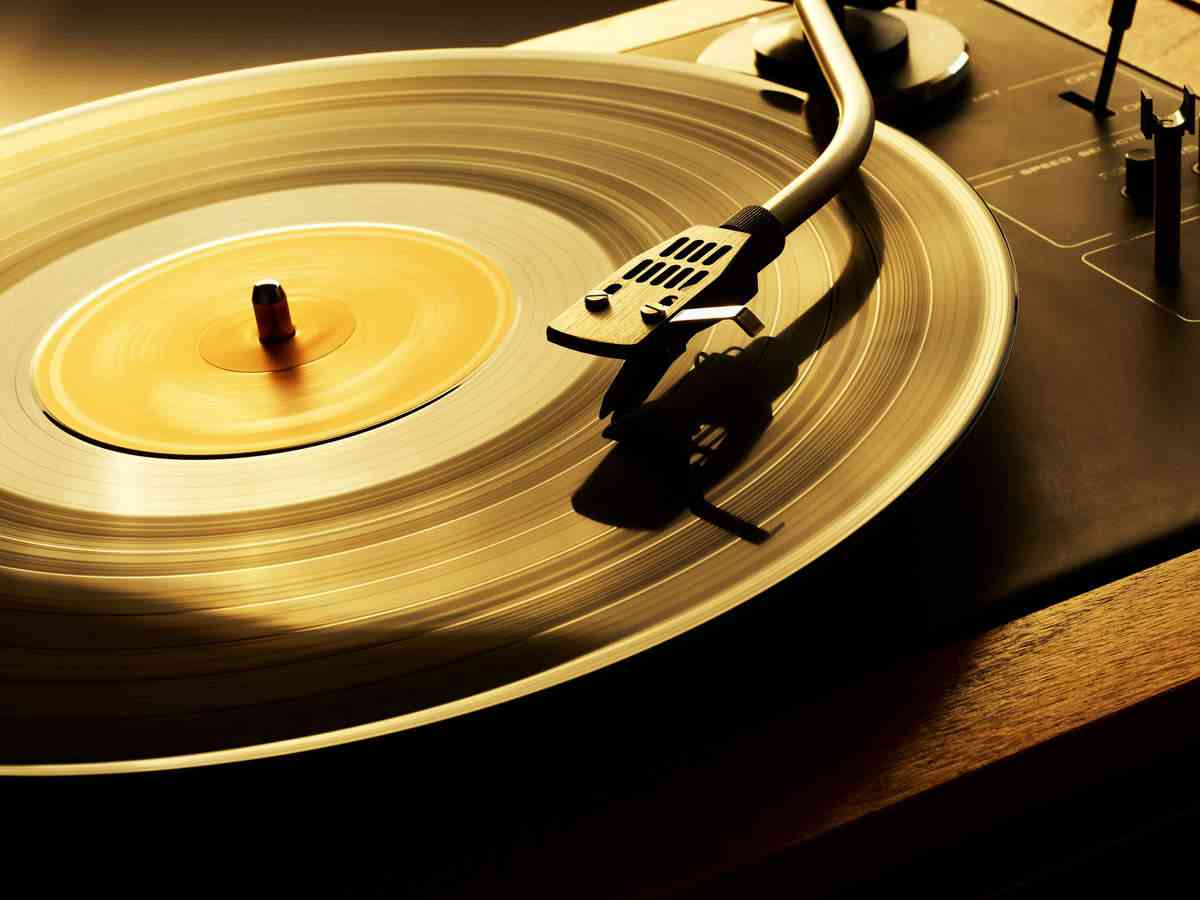
Recently, a debate has been raging among record companies and music producers in Zimbabwe about whether to re-introduce the vinyl record market or to continue with the compact disc (CD) market.
However, there is probably no need for debate in this area as ZMC and Gramma Records the only Record Companies in Zimbabwe who owned a vinyl record pressing plant, put up for sale their pressing plant on e-Bay in 2015. As a result, vinyl records can no longer be manufactured in Zimbabwe yet there is a resurgence in the vinyl market throughout the rest of the world.
If you will recall, not long ago I wrote an article titled “Forget Vinyl, CDs are Making a Comeback!” However, this issue is no longer debatable in Zimbabwe as all vinyl records are now imported. We are just dependent on CDs. Also, internet ubiquity has allowed music fans to download and share music freely.
For years, vinyl records have defied sales expectations, with their popularity growing even as streaming music has come to dominate the industry. But what has happened to the old bricks-and-mortar retail outlets (or record shops) that used to house records and CDs? All of them are now closed.
However, the humble compact disc often called the CD has come back, but only in our streets where music pirates run amok. Allow me to explain what is meant by CD:
A compact disc (CD) is a portable storage medium that can record, store and play back audio, video and other data in digital form.
A standard compact disc measures 4.7 inches, or 120 millimeters (mm), across, is 1.2 mm thick, weighs between 15 grams and 20 grams, and has a capacity of 80 minutes of audio, or 650 megabytes (MB) to 700 MB of data.
A CD works by focusing a 780 nanometer wavelength semiconductor laser onto a single track of the disc. As the disc rotates, the laser beam measures differences in the way light is reflected off the polycarbonate layer on the bottom of the disc, converting it to sound.
- Chamisa under fire over US$120K donation
- Mavhunga puts DeMbare into Chibuku quarterfinals
- Pension funds bet on Cabora Bassa oilfields
- Councils defy govt fire tender directive
Keep Reading
CDs are fragile and prone to scratches; they can be repaired, but disc readability may be affected.
James Russell, an American inventor, envisioned an alternative to vinyl albums to store and play audio recordings. He was the first person to file a patent for a product resembling a combination of laser, digital recording and optical disc technologies in 1966. Philips Electronics and Sony Corp. then purchased licenses of the technology in the 1980s.
The first commercial compact disc, a recording of a series of Chopin waltzes performed by pianist Claudio Arrau, was released in 1982. Prior to that, test recordings were completed in 1979. In 1981, the BBC demonstrated a CD
playing the Bee Gees' album, Living Eyes. After this, an alternative to vinyl records in the form of the compact disc, came about. It is easier to carry and lighter than the vinyl record and it has been well-received by the public since the 1980s.
The conditions of musical reception are re-configured and now the public’s tastes emerge potentially in conflict with each other. The vast entertainment and media complex is growing more rapidly than the global economy, and with each passing year more people are spending more of their time, attention and money on the complex and increasingly immersive experiences available. In essence, the industry is becoming more digital, more mobile, more pitched at media that attract the young, and more evenly distributed around the globe.
However, the likes of Spotify, Apple Music and YouTube music who offer music digitally, made physical formats – vinyl, CD and tapes – less attractive, and music stores across Zimbabwe, such as Spinalong and Radio Limited, closed as demand slumped. Zimbabwe’s last remaining music retail chain, which was situated at Sam Levy’s in Borrowdale closed its doors in 2021 when the move to digital streaming, coupled with the Covid pandemic, killed off the business.
These record shops have been replaced by street vendors with pirated dollar-for-two CDs for sale. Sometimes one can buy music from the few flea markets scattered around Zimbabwe’s cities. The invention of the Internet and digital media created music piracy in its modern form. With the invention of newer technology that allowed for the piracy process to become less complicated, it became much more common. Anyone with a computer and blank CDs can download music free of charge from the internet.
Irrespective of how they are manufactured, CD sales seem to be on the rise.
Every other street corner in Harare’s central district, harbours a CD vendor who makes a living through this illegal activity.
According to Gear Patrol, a US-based product review site, for the first time in almost two decades, CD sales are rising in that country.
After being in a steady decline since 2000, CD sales grew in 2021 for the first time in nearly two decades. CDs are simply the best-sounding physical audio format that most people can get their hands on. Audio hardware manufacturers continue to make CD players precisely because of demand from audiophiles. As Gear Patrol notes, in the past few years, companies such as Cambridge Audio, Panasonic, McIntosh, Rotel and Sony have all released new CD players, thus making it easier for those who prefer to listen to their favourite artistes either at home, in their offices or in their cars.
Despite streaming services available today, there are also a huge number of CDs in people’s homes. In the US, for example, music fans have purchased 14,9 billion CDs since the format’s arrival. That’s according to the Recording Industry Association of America, which also says physical music sales – primarily CDs, increased by 4% in 2022 compared to the year before.
Despite the increase in CD sales, the vendors selling CDs on the streets of Harare have prevented business people from opening record shops as those who aspire to venture into this field find no reason to compete with the brisk business proffered by street vendors. However, those who wish to buy CDs of their popular artistes will have no trouble getting them from the streets or from flea markets as there is a resurgence in the CD market. Yes, the radio or online streaming will give you music, but you can’t touch the physical thing like we do with records or CDs. You cannot replay it either. All you do is listen to it.
The CD will give you that opportunity to get the tangible music hardware which you can play whenever you feel like.
According to Sandra Laurence, a South African-based blogger, there are four good reasons behind this resurgence in the CD market.
Let’s dive into her groove:
The first one is called Audiophile Appeal: While streaming services compress their music, CDs offer uncompressed (or lossless) audio. Audiophiles, those discerning listeners who crave pristine sound quality, appreciate the fidelity of CDs. In fact, audio hardware manufacturers continue to produce CD players due to demand from these music connoisseurs.
The second reason is about the availability of New CD Players: Companies like Cambridge Audio, Panasonic, McIntosh, Rotel, and Sony have recently released new CD players which are also reasonably priced. These sleek devices allow you to rediscover your favourite albums with crystal-clear sound.
The third reason is based on the Nostalgia Factor: Remember the days when we waited eagerly for the latest record release or spent hours at listening stations, deciding which CDs to buy? Well, that nostalgia is making a comeback too. CDs evoke memories of flipping through album booklets, admiring cover art, and carefully handling those shiny discs.
The fourth reason is Physical Collectibles: In a digital age, there’s something satisfying about owning a tangible collection. CDs provide that tactile experience – sliding a disc into the player, pressing play, and immersing yourself in the music.
So, dust off your old CD collection, or explore new releases. Whether you’re a seasoned audiophile or simply craving a dose of nostalgia, it’s time to give those compact discs another spin! The introduction of the blank CD opened the door for anyone with a modern computer to create their own CDs at a very cheap cost. Digital audio can be shared easily and instantly, which has led to a major decentralisation of the entire music business. Now amateurs can digitally record music, create CDs, and sell the music directly to vendors who in turn sell them to the public on the streets.
The CD format was established by a collaboration between Philips and Sony and became commercially available in 1982. Ironically, many of the early adopters of the new digital technology were audiophiles and classical music lovers. The digital compact disc format evolved into multiple forms to handle data (CD-ROM, DVD, Blu-ray). Despite free musical downloads on the internet, music lovers still prefer to have a collection of the physical thing, the compact disc. Laurence’s four reasons given above are the main thrust towards the resurgence of the CD market. Many music lovers have realised that keeping one’s own collection of CDs is better than being dependent on music downloads.
Feedback: [email protected]











